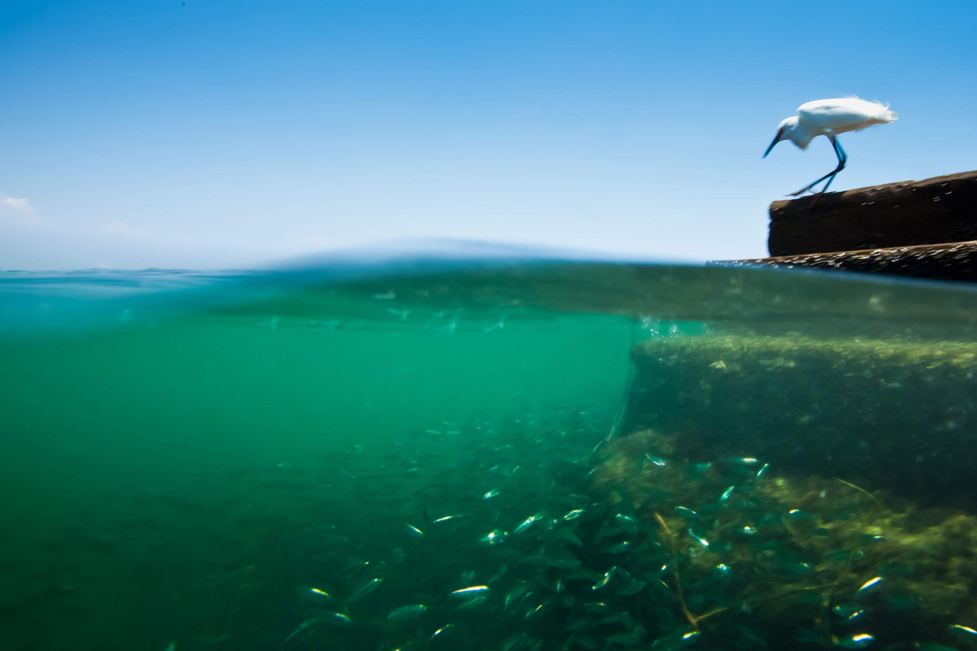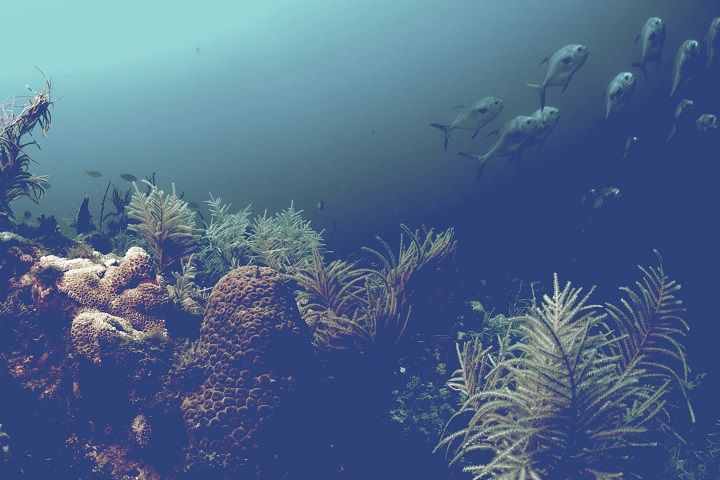
The Gulf Coast of Florida is a place of vast wealth and hidden treasures. In addition to being incredibly biodiverse, it is also a significant source of acquaculture and tourism. All told, the current economic value of Sarasota Bay alone - the lagoon located off the west coast of Florida - is an estimated $11.8 billion in terms of tourism, jobs, recreation, and property. And yet, it appears that much of the natural wealth remains untapped.
For starters, in 2013, over $697 million worth of farmed fish ahd shellfish products were imported into Florida, while just $15 million worth of exports were produced locally. Surrounded by oceans, the state of Florida could easily alter this trend by providing more locally-sourced shellfish and assorted seafood, thus putting a dent in the US's reliance on imported seafood (which currently accounts for 90% of national consumption).
In addition, the sea regions around Florida offer immense opportunities for studying ocean environments and marine life. The world's oceans are home to roughly 80% of all living organisms on the planet, but only 5% of the oceans have been explored and an estimated 10 million marine species have yet to be identified. And Sarasota Bay is home to many fascinating species of marine life and ecosystems, which includes sharks, stingrays, manatees.

Florida has three contiguous National Estuary Programs - Tampa Bay, Sarasota Bay and Charlotte Harbor - the most of any state in the US. Credit: water.epa.gov
On top of all that, the region faces numerous environmental issues. The Florida panther is close to extinction, and manatees are also dying at a rate higher than their reproduction. Much of Florida, including populated regions like Miami that are vital to the state's economy, are also at an elevation of less than 3.7 meters (12 feet), which places them amongst the most vulnerable regions in the world to rising sea levels associated with global warming,
Hence why the Gulf Coast Community Foundation launched the Gulf Coast Innovation Challenge (GCIC) - a $500,000 incentive-based competition that seeks to foster meaningful solutions for helping to protect Florida's oceans while also providing opportunities for jobs, investment and development. By growing the Gulf Coast region's marine-science cluster, the GCCF hopes to develop the most innovative "Blue Economy" in the southeastern US.
According to a new report - entitled "Developing the Blue Economy of Florida's Gulf Coast", which was released in conjunction with the launch of the Innovation Challenge - the Blue Economy includes businesses, institutions, and resources in the areas of aquaculture, fisheries, biomedicine, biotechnology, marine engineering, water quality, coastal ecology, sustainable foods, agritourism, and recreation.

The GCCF seeks to transform the region through philanthropic efforts and development opportunities. Credit: gulfcoast.cf.org
As Teri A. Hansen, the president and CEO of Gulf Coast, explains: “Thousands of jobs and tens of millions of dollars in economic activity are already tied to the businesses, resources, and habitats of our region’s waters. Yet this has been a largely hidden sector here, one that holds enormous potential for innovation and growth."
With a focus on sustainable growth that both utilizes and protects the natural environment, the Foundation also hopes to address one of Florida's most pressing needs - which is the issue of poverty and hunger. Currently, 50% of Sarasota County schoolchildren qualify for free or reduced-cost lunch programs, which means that at least 21,000 children in Florida often go hungry.
Already, there are initiatives in connect Florida schools with local food. With a budget of $7.2 million, Sarasota County Schools have set a goal to source at least 50% of school foods from the region. Expanding the Gulf Coast’s sustainable-food systems could therefore provide local seafood to schools, restaurants, and stores while investing funds back into the region to provide jobs and feed families.
Equally important are the opportunities the coast's natural environment can offer for biomedicine and biotechnology. According to the NOAA, many species of acquatic organisms - from sponges and coral to molluscs and Skates - contain helpful compounds that can be used to treat cancer, bacterial infections, viruses, heart disease, pain, and even HIV/AIDS. With its vast coral reefs and biodiversity, the Gulf Coast is a veritable treasure trove for medical researchers.

The Gulf Coast Innovation Challenge is focused on feeding Florida's community's while protecting wildlife. Credit: gulfcoast.cf.org
The Challenge is open to participants anywhere, but each team must include at least one member from the regions of Boca Grande to Manatee County, and submitted ideas must provide a public benefit within the same area. The competition officially kicked off on February 24th, 2015, will remain open to initial entries until April 30th, and will close to all applications by June 30th.
By July 31st, the Foundations plans to award up to five competing teams with $25,000 grants to prototype their Blue Economy ideas. Between October and November, the prototyping phase will take place, from which one team will be selected to recieve up to $375,000 more in grant funding to fully develop their concept.
Ultimately, the Foundation is looking for ideas that identify a regional challenge in the area of marine science, and propose a solution that enhances the Gulf Coast's Blue Economy and benefits the public. “We’re looking for entrepreneurs, educators, conservationists, scientists" said Hansen, "anyone who is interested in saving our seas, feeding our communities, and creating new opportunities in the marine sciences."
And while they are looking to get local communities on the Gulf Coast involved, the Foundation is also hoping to tap the knowledge and expertise of the wider community, not to mention incorporating the ideas of people who may be able to offer a fresh perspective. When it comes to sustainability and development, one of the greatest tools we have today is the ability to get others involved.
In the meantime, be sure to check out this video from the Gulf Coast Community Foundation:
Sources:
- www.gulfcoastchallenge.org/
- www.gulfcoastcf.org/
- sarasotabay.org/
- www.epa.gov/
- www.biologicaldiversity.org/programs/oceans/
- www.noaa.gov/features/economic_0309/medicines.html
- www.gulfcoastchallenge.org/sites/all/themes/gcic/GCCF_Blue-Economy-report_02.15.pdf
- www.gulfcoastcf.org/news/2015/03/10/submissions-open-for-500000-gulf-coast-innovation-challenge/








